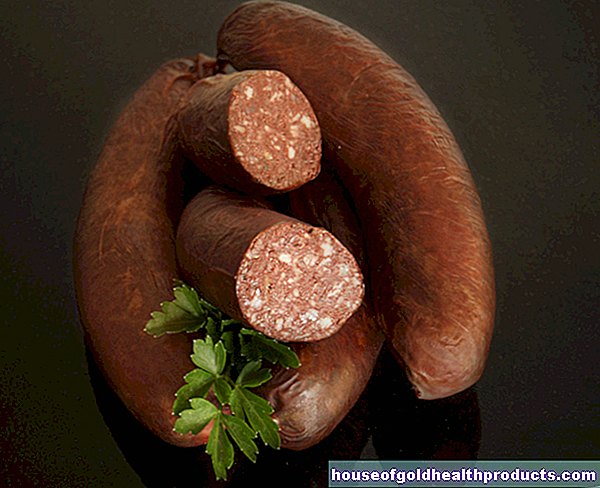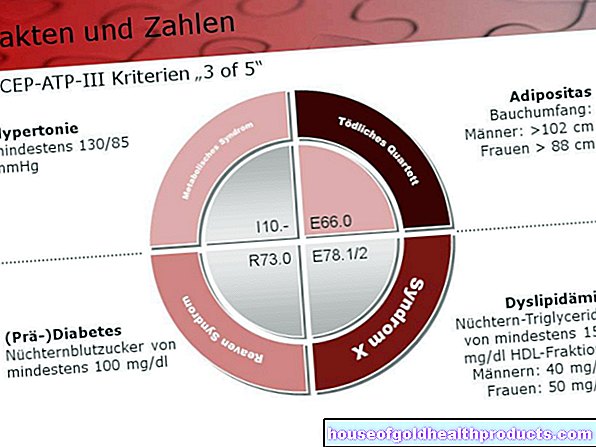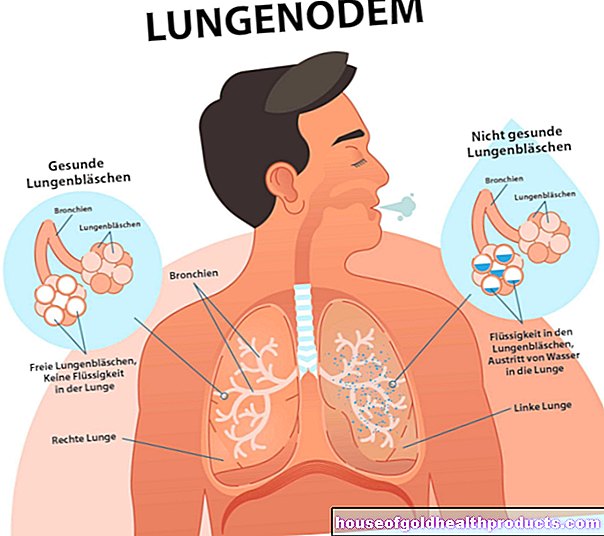Maltodextrin
All content is checked by medical journalists.Maltodextrin is one of the most important substances used to increase calorie intake. It is obtained from starch and absorbed from the intestine into the blood just as quickly as the simple sugar glucose (grape sugar). However, its sweetness is very low. Maltodextrin is generally considered to be well tolerated, but in rare cases it can lead to gastrointestinal complaints. Here you can read everything you need to know about maltodextrin.
What is maltodextrin?
Maltodextrin belongs to the group of carbohydrates. Carbohydrates usually make up the majority of our diet. They are mainly found in side dishes such as potatoes, pasta and rice, as well as in bread. The daily amount of food should consist of 70 percent carbohydrates. The remaining 30 percent are ideally made up of proteins and fats.
In some cases, the nutrient and calorie needs cannot be met through a normal diet. For example, the need for calories in competitive athletes is significantly increased, so that it may be necessary to consume high-calorie food with added maltodextrin. Even if the body weight is too low, this type of sugar is often used to support weight gain: Due to its high nutritional value, you can gain weight quickly with maltodextrin.
The active ingredient is obtained from starch: normal starch is a so-called polysaccharide (multiple sugar), which means that it consists of many sugar molecules strung together (like a string of pearls). Treatment with enzymes breaks the starch into short pieces. The resulting maltodextrin is a mixture of short-chain sugars (parts of the string of pearls of different sizes). Due to the shortened chain length, it is absorbed from the intestine into the blood just as quickly as the simple sugar glucose (grape sugar). Because it hardly tastes sweet, a large amount can be used without, for example, the sports nutrition (sports drinks, gels or bars) becoming unpleasantly sweet. Maltodextrin solutions are also easier to drink than glucose solutions because of their lower viscosity.
Another advantage is that maltodextrin can be sterilized (killing the germs to preserve it). Therefore it can also be used for tube feeding with an extended shelf life.
Absorption, breakdown and excretion of maltodextrin
The sugar compound is quickly and completely absorbed from the intestine into the blood. After splitting, it is distributed throughout the body and used by the body's cells to generate energy. After the "burn" in the cells, only water and carbon dioxide remain as degradation products. The latter is exhaled through the lungs.
When is maltodextrin used?
The following areas of application apply to the sugar compound:
- if your body weight is too low due to insufficient calorie intake
- for the calorie enrichment of baby food
- as an additive in food (often as a fat substitute or an extender in "light" products)
This is how maltodextrin is used
The sugar compound is usually taken daily in addition to other food. The dose depends on the individual calorie requirement. There are 95 grams of carbohydrates per 100 grams of maltodextrin, which contain around 380 kilocalories (kcal). One tablespoon of the sugar corresponds to about 38 kcal.
Tube feeding is usually bought as a finished product with the right composition.
What are the side effects of maltodextrin?
The substance is generally very well tolerated. With very high intake, the active ingredient can cause side effects such as gastrointestinal complaints.
What should be considered when taking maltodextrin?
Various starches can be used to make maltodextrin, including wheat starch. Like all types of grain, wheat contains the adhesive protein gluten, which people with gluten intolerance (such as celiac disease) must avoid. Many fear that maltodextrin obtained from wheat starch also contains gluten and must therefore not be consumed. But that's not true, maltodextrin obtained from wheat starch is not a problem for people with gluten intolerance. It is therefore excluded from allergen labeling for foods containing gluten.
How to get maltodextrin
The sugar compound is available over the counter in pharmacies and drug stores.
More interesting facts about maltodextrin
The name maltodextrin is derived from two terms: "Malto" stands for maltose, the malt sugar, which consists of two glucose units. "Dextrin" stands for dextrose, another name for glucose (grape sugar). This combination of words is intended to make it clear that maltodextrin is a mixture of various short-chain sugars.
Tags: palliative medicine sleep first aid














-kastanienmnnchen-und-perlenschweine.jpg)














